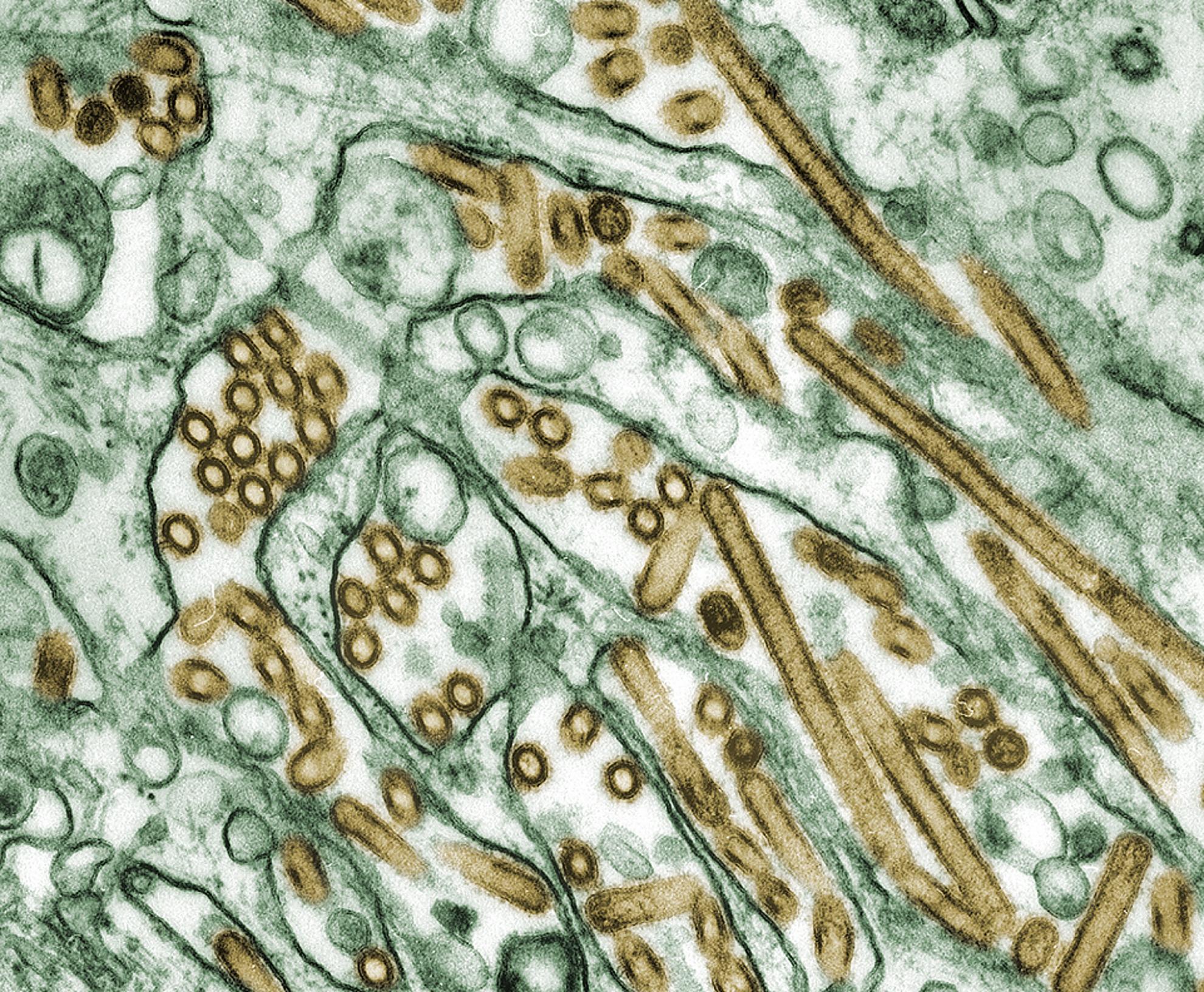Four mutations in bird flu viruses allow them to escape human antiviral drugs without compromising their fitness, studies at The Pirbright Institute have revealed. If flu strains with these mutations make the jump from birds to humans, available options for prevention and treatment could be limited.
There are many types of antivirals designed to combat influenza in humans, which target different parts of the virus to prevent infection. The antivirals tested in this study are known as neuraminidase inhibitors, which are globally recommended and currently the most widely used for the treatment of flu in humans. They are small chemical compounds that prevent flu viruses from replicating by binding to the neuraminidase (NA) proteins found on their surface.
However, flu viruses can evolve resistance against neuraminidase inhibitors by changing their NA proteins through mutations in their genome. Several circulating bird flu strains have been found with naturally occurring mutations that are like those found in resistant human strains. As the H5N6 bird flu strain has previously infected humans, Pirbright scientists set out to understand if these mutations would make H5 strains less susceptible to neuraminidase inhibitors and whether this would alter their ability to replicate.
The study, published in Antiviral Research, showed that four resistance mutations commonly found in human flu strains also reduce the susceptibility of highly pathogenic H5 strains to neuraminidase inhibitors. The mutations either had no effect on the virus’ ability to replicate or improved it by prompting additional mutations that allow for efficient replication in cells. These other mutations could also affect which animals the virus is able to infect, which may alter the likelihood of the virus spreading to other animals, including humans.
Dr Holly Shelton, head of the Influenza Viruses Group, said: "It is extremely important for us to know whether mutations that prevent antivirals from working against human flu strains affect bird strains in the same way, as several human pandemics have been caused by bird flu viruses that were able to jump the species barrier. Our study has shown that bird flu viruses can support mutations that reduce the effectiveness of antivirals, which would make an outbreak harder to contain should the virus evolve to infect humans. On-going surveillance of circulating H5 strains in birds is therefore essential and should include the mutations we have identified that are associated with human drug resistance."
This research was funded by the Biotechnology and Biological Sciences Research Council (BBSRC), part of UK Research and Innovation (UKRI).
Image shows colourised transmission electron micrograph of avian influenza viruses (seen in gold) grown in cells by Cynthia Goldsmith.
